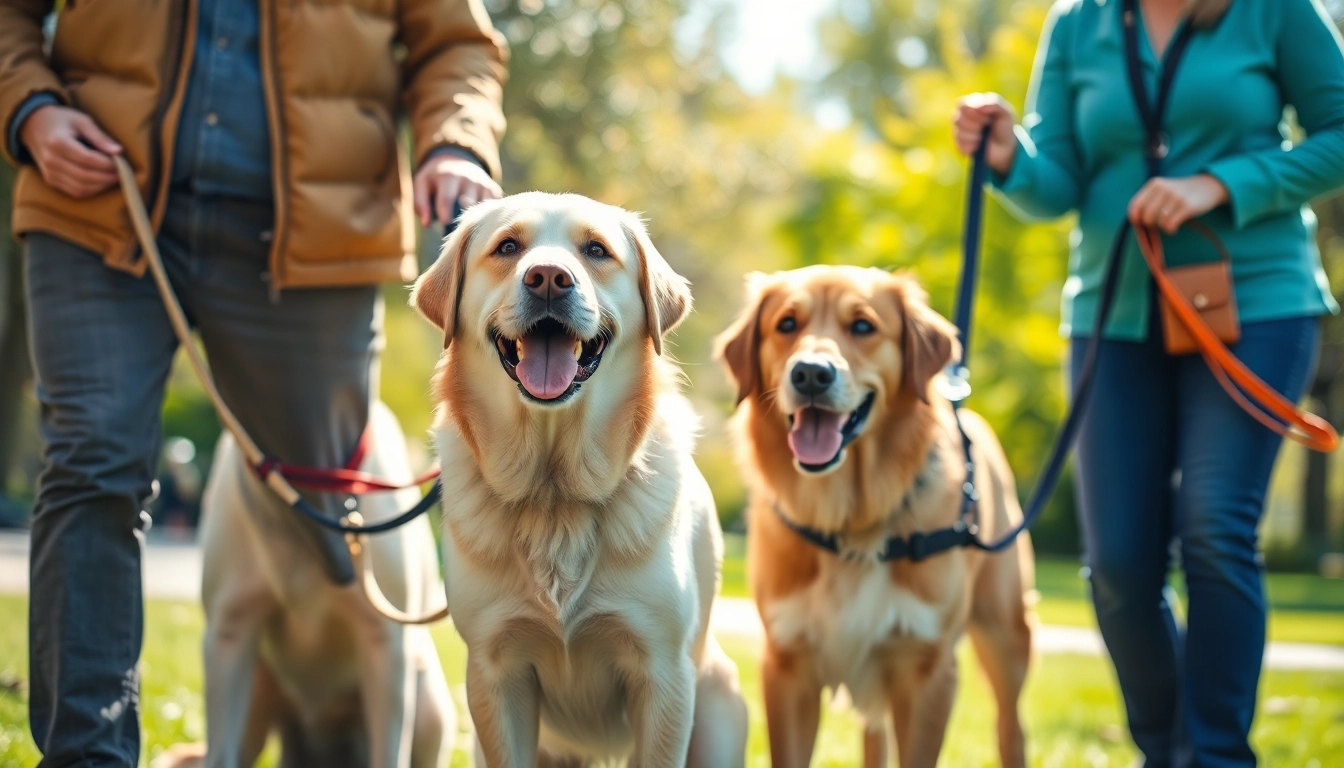What Are Service Dogs?
Definition and Purpose of Service Dogs
Service dogs are defined as dogs that are individually trained to perform tasks for an individual with a disability. These tasks must be directly related to the person’s disability, which can range from mobility issues to psychiatric conditions. The core purpose of service dogs is to enhance the quality of life for their human partners by providing practical assistance that allows them to navigate daily life with greater ease.
In practical terms, this means that any breed or size of dog can be trained as a service dog so long as they demonstrate the appropriate temperament and capabilities. They are not classified as pets; rather, they are working animals, eligible for specific rights and accommodations under the law. You can learn more about the role of service dogs in society and the laws that protect their rights.
Types of Service Dogs
Service dogs can be categorized based on the specific tasks they perform, including:
- Guide Dogs: Assist individuals with visual impairments, helping them navigate obstacles and safely reach their destinations.
- Hearing Dogs: Alert individuals with hearing impairments to sounds such as fire alarms, doorbells, or other important auditory cues.
- Mobility Assistance Dogs: Aid individuals with physical disabilities by retrieving items, opening doors, or providing stability while walking.
- Medical Alert Dogs: Trained to recognize medical conditions such as diabetes or seizures and alert their owners accordingly.
- Psychiatric Service Dogs: Assist individuals with mental health conditions, providing support for those who face anxiety, PTSD, or depression.
Legal Rights and Regulations
Service dogs enjoy specific legal protections under the Americans with Disabilities Act (ADA). This legislation grants individuals with disabilities the right to be accompanied by their service dogs in public places, including restaurants, hotels, and public transport. It is important to note that the ADA has strict criteria defining what constitutes a service dog, ensuring that only trained dogs that perform necessary tasks are recognized for these rights. Therefore, it excludes emotional support dogs and therapy animals from the same protections.
Benefits of Service Dogs for Individuals with Disabilities
Physical Assistance and Mobility
One of the most significant benefits of having a service dog is the physical assistance they provide. For individuals with mobility challenges, dogs can be trained to aid with balance, retrieve items that are out of reach, and even assist with navigation in crowded or chaotic environments. This physical support can greatly enhance independence, enabling individuals to engage more fully with their surroundings.
Emotional Support and Mental Health
In addition to providing physical assistance, service dogs also serve critical roles in mental health management. Many individuals suffering from disorders such as PTSD, anxiety, or depression benefit immensely from the presence of a service dog. These dogs can help reduce stress and anxiety levels, offer companionship, and alert to panic attacks or episodes of dissociation. The emotional bond formed with a service dog often helps to alleviate loneliness and fosters a sense of security.
Building Independence and Confidence
Having a service dog can increase a person’s sense of autonomy and self-esteem. The support provided by these dogs empowers their handlers by enabling them to engage in activities that they might otherwise avoid due to their disability. This newfound independence can lead to an improved quality of life and can result in a positive shift in overall mental health. Service dogs often become reliable companions, instilling a sense of purpose in their handlers’ lives.
How to Choose the Right Service Dog
Assessing Your Needs
Choosing the right service dog begins with an assessment of the specific needs of the individual. Considerations should include the nature of the disability, the specific tasks needed from the service dog, and any personal preferences regarding size and breed. Engaging with healthcare professionals or service dog organizations can provide valuable insights during this evaluation phase.
Breeds Best Suited for Service Work
While any breed of dog can potentially be trained as a service dog, certain breeds are commonly recognized for their suitability in service roles. Breeds such as Labrador Retrievers, Golden Retrievers, and German Shepherds are popular choices due to their temperamental qualities, intelligence, and willingness to work. The right breed can have a substantial impact on the success of the service dog partnership.
Finding Reputable Training Programs
Once the right breed is chosen, finding a reputable training program is crucial. Quality programs should follow nationally recognized standards, utilizing trainers who have experience working with service dogs. Look for programs that guarantee ongoing support and resources post-training. This ensures that both the handler and the dog thrive in their working relationship.
Training and Certification of Service Dogs
Essential Training Commands
Service dogs undergo extensive training that includes a set of essential commands that enable them to perform their tasks efficiently. Some of these commands include:
- Retrieve specific items (e.g., keys, medication)
- Alerting their handler to sounds (e.g., doorbell, alarms)
- Providing stability for walking (e.g., bracing)
- Blocking or guiding away obstacles in the handler’s path
The training process can vary in length depending on the tasks being taught, with some dogs undergoing training for several months to a year prior to being partnered with an individual.
Certification Process and Requirements
While the ADA does not require formal certification for service dogs, many training programs offer certification to help validate the dog’s training and capabilities. Certification may include assessments on the dog’s obedience and task performance in different settings. It is important to ensure that the certification process is aligned with legal requirements and recognized standards.
Common Myths About Service Dogs Training
Despite the growing awareness about service dogs, there remain several myths regarding their training. A common misconception is that any dog can automatically become a service dog with minimal training. In reality, effective service dogs require extensive and specific training tailored to the individual’s needs. Furthermore, another myth is that service dogs are only for blind individuals or those with visible disabilities. This stereotype undermines the important role that service dogs play for numerous individuals with a wide range of disabilities.
Caring for Your Service Dog
Health and Nutrition Needs
Service dogs, like all dogs, require proper nutrition and regular veterinary care to maintain their health and effectiveness in their roles. Selecting a balanced diet that fits the dog’s age, size, and energy level is essential. Regular check-ups should be scheduled to monitor their health and to keep up to date with vaccinations and preventative care.
Regular Training and Reinforcement
Continuous training and reinforcement of skills are crucial parts of maintaining a service dog’s abilities. Regular practice helps solidify the commands learned during initial training and helps address any new behaviors that may arise. This ongoing instruction not only keeps the dog effective in their role but also strengthens the bond between the handler and their service dog.
Building a Strong Bond with Your Service Dog
Establishing a strong, trusting relationship with a service dog is essential for a successful partnership. Engaging in playtime, training sessions, and shared experiences fosters a robust bond. Time spent together can greatly enhance communication and understanding, creating a safe environment where both the handler and the service dog can thrive.



